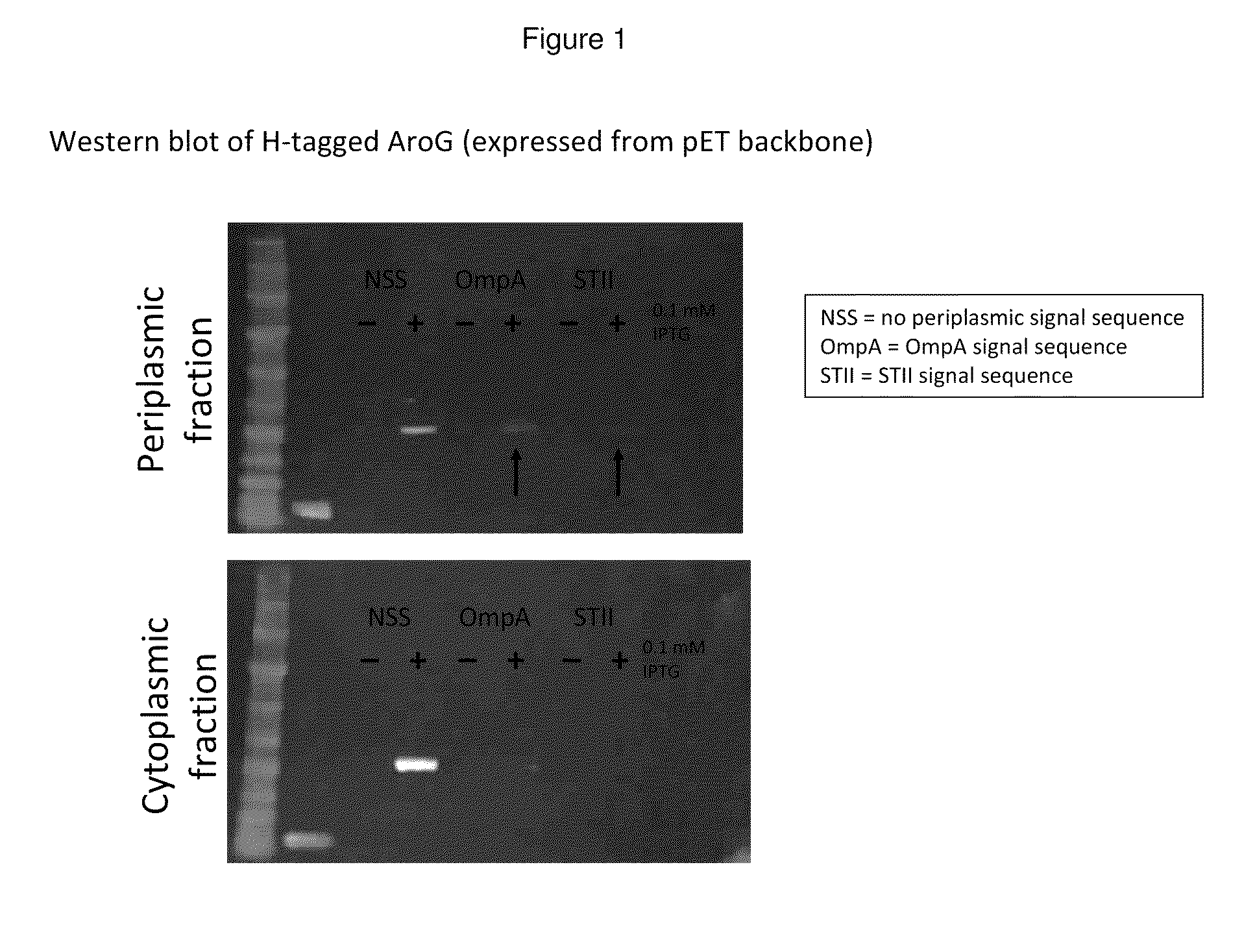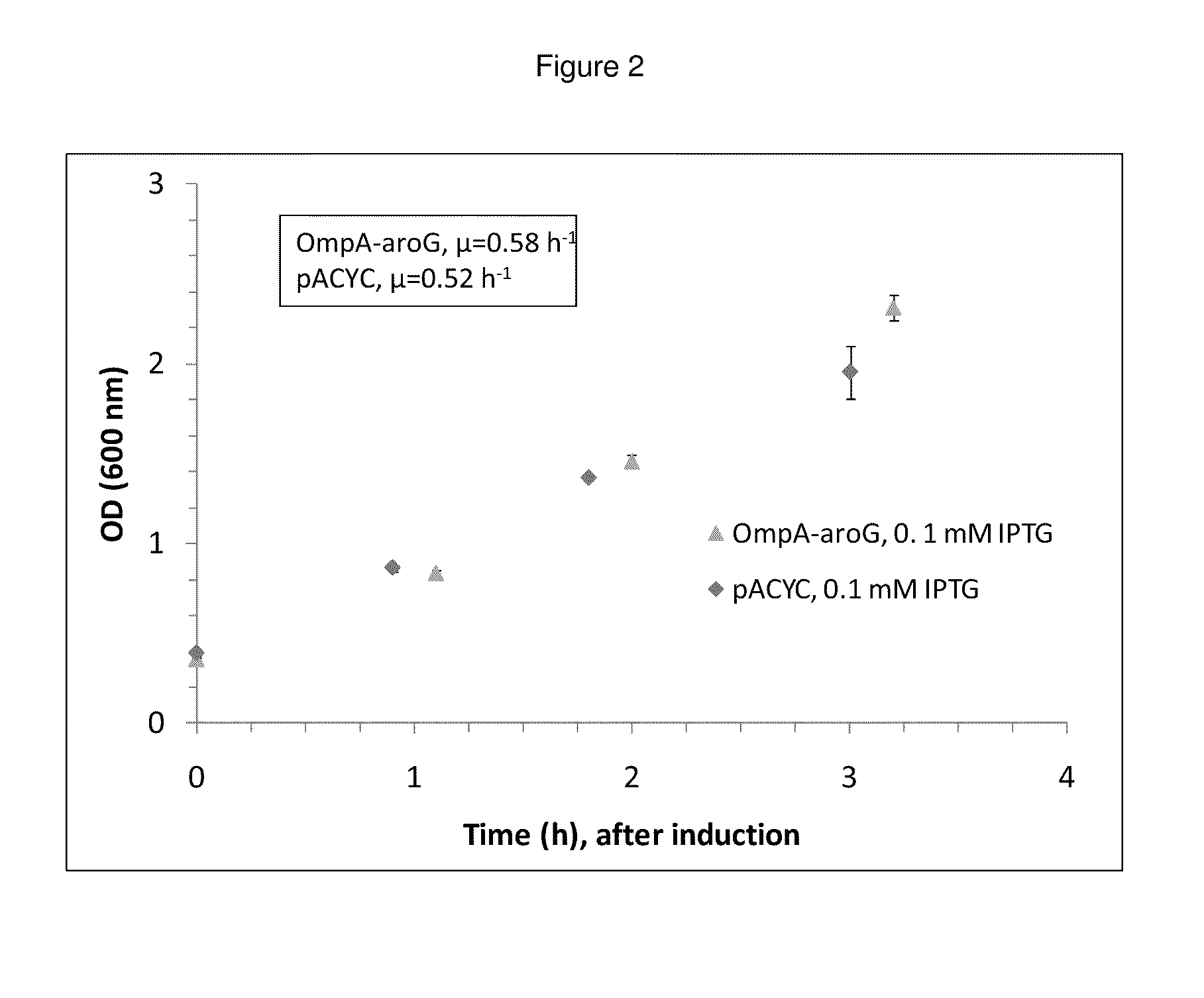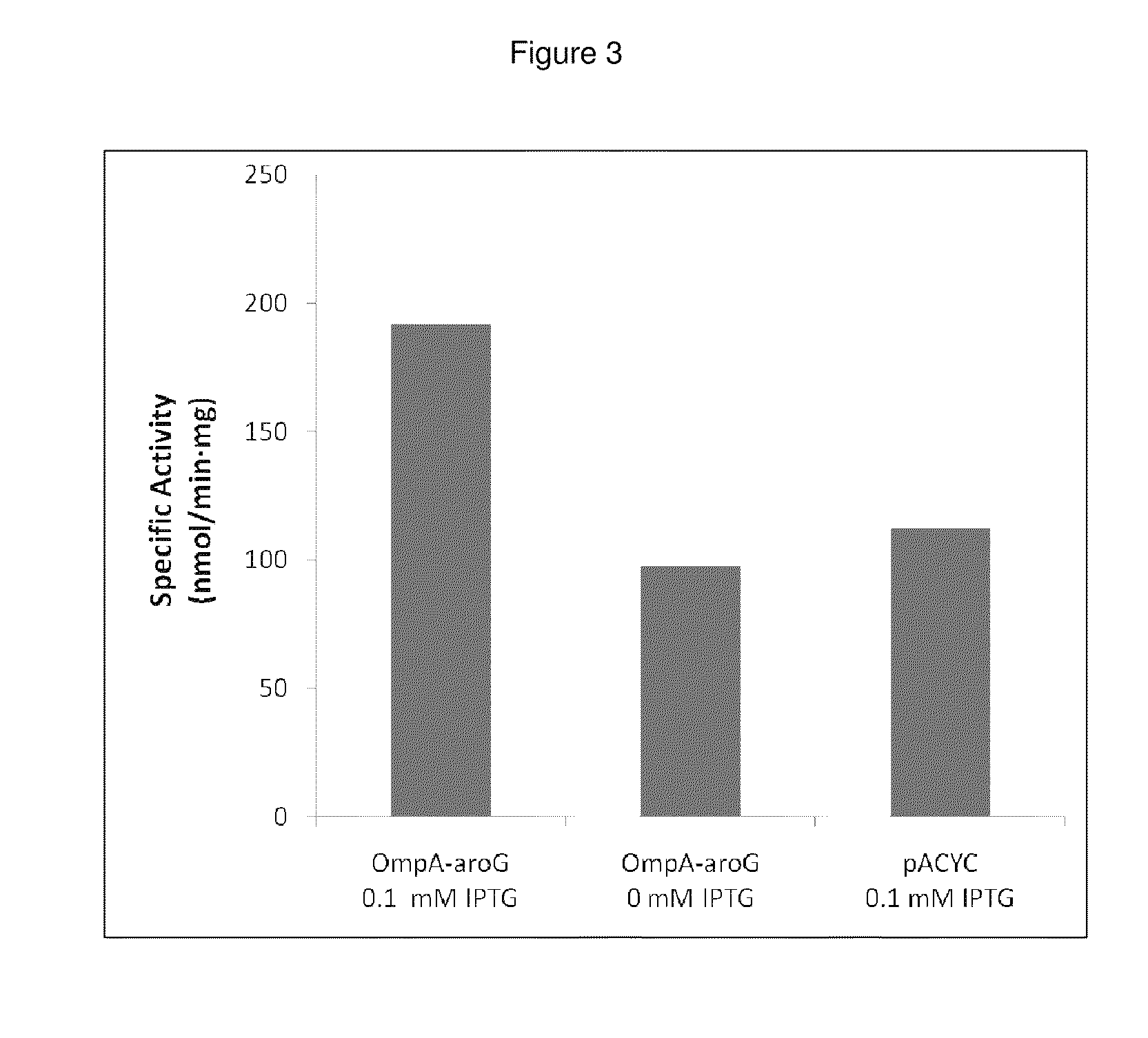Methods for control of flux in metabolic pathways through enzyme relocation
a metabolic pathway and enzyme technology, applied in the direction of lyases, transferases, peptides, etc., can solve the problems of limiting overall yield, affecting the efficiency of metabolic pathways, so as to increase the concentration of key pathway enzymes
- Summary
- Abstract
- Description
- Claims
- Application Information
AI Technical Summary
Benefits of technology
Problems solved by technology
Method used
Image
Examples
example 1
Production of Shikimic Acid
[0194]Shikimic acid is an intermediate in the chorismate biosynthetic pathway, where the key entry enzyme is 2-dehydro-3-deoxyphosphoheptonate aldolase (3-deoxy-D-arabinoheptulosonate-7-phosphate, DAHP, synthase). DAHP synthase catalyzes the first committed step in shikimate production by converting the central metabolites phosphoenolpyruvate (PEP) and erythrose-4-phosphate (E4P) to DAHP. In E. coli, there are three DAHP synthase enzymes—AroG, AroE, and AroF—encoded by genes aroG, aroE, and aroF, respectively. It is common that feedback resistant versions of these enzymes (Kikuchi et al., Appl. Environ. Microbiol. (1997) 63:761; Ray et al., J. Bacteriol. (1988) 170:5500; Weaver and Herrmann, J. Bacteriol. (1990) 172:6581) are used to ensure maximal activity.
[0195]In this example, a DAHP synthase gene is modified to contain various periplasmic signal sequences (periplasmic leader peptides) targeting the enzyme to the periplasm. Expression optimization, eval...
example 2
Growth Effects and Activity of Periplasmically-Expressed AroG
[0205]Periplasmic expression of DAHP synthase. A library of plasmids is constructed containing the gene coding for AroG (Genbank Acc. no. AAC73841.1) modified with various periplasmic signal sequences targeting the enzyme to the periplasm. The DNA sequences of primers used to construct the coding sequences for the periplasmic leaders tested are set forth in Tables 4 and 5. DNA sequences coding for a set of periplasmic signal sequences are added to the aroG gene through PCR amplification using the following primers:
[0206]
TABLE 4Primers Used to Add Periplasmic Targeting Signals to aroGLeaderPrimerSequencenoneF 5′gcaattcggtctcccatgaattatcagaacgacgatttacgcatc(SEQ ID NO: 11)R 3′gaattcgcggccgcttacccgcgacgcgcttttac(SEQ ID NO: 12)OmpAF 5′gcaattcggtctcccatgaaaaaaacggcaattgcgatagcg(SEQ ID NO: 13)R 3′gaattcgcggccgcttacccgcgacgcgcttttac(SEQ ID NO: 14)StIIF 5′gcaattcggtctcccatgaaaaaaaatattgctttcctgctcg(SEQ ID NO: 15)R 3′gaattcgcggccgct...
example 3
Cell Free Production of Isobutanol and / or 1-Butanol
[0218]Current methods for production of isobutanol in E. coli rely on over-expression of the E. coli enzymes of valine biosynthesis IlvI,H,C,D in concert with overexpression of two heterologous enzymes: the alcohol dehydrogenase 2 enzyme of S. cerevisiae (ADH2, GenBank AAA34411.1) and the 2-keto-acid decarboxylase enzyme of L. lactis (KivD, GenBank CAG34226.1) (see, e.g., Atsumi et al., Nature (2008) 451:86). Similarly, production of 1-butanol requires the overexpression of the same two heterologous enzymes (ADH, KivD) combined with overexpression of IlvA and LeuABCD enzymes of isoleucine and leucine biosynthesis in E. coli (Atsumi ibid). Accumulation of higher alcohols (e.g., isobutanol, 1-butanol, n-butanol) is toxic at very low levels, 2% (w / v) (Atsumi ibid; Reyes et al., Plos One (2011) 6:e17678) resulting in poor cell growth and poor product titers when these pathways are active in growing E. coli.
[0219]Periplasmic relocation ...
PUM
| Property | Measurement | Unit |
|---|---|---|
| temperatures | aaaaa | aaaaa |
| optical density | aaaaa | aaaaa |
| volume | aaaaa | aaaaa |
Abstract
Description
Claims
Application Information
 Login to View More
Login to View More - R&D
- Intellectual Property
- Life Sciences
- Materials
- Tech Scout
- Unparalleled Data Quality
- Higher Quality Content
- 60% Fewer Hallucinations
Browse by: Latest US Patents, China's latest patents, Technical Efficacy Thesaurus, Application Domain, Technology Topic, Popular Technical Reports.
© 2025 PatSnap. All rights reserved.Legal|Privacy policy|Modern Slavery Act Transparency Statement|Sitemap|About US| Contact US: help@patsnap.com



